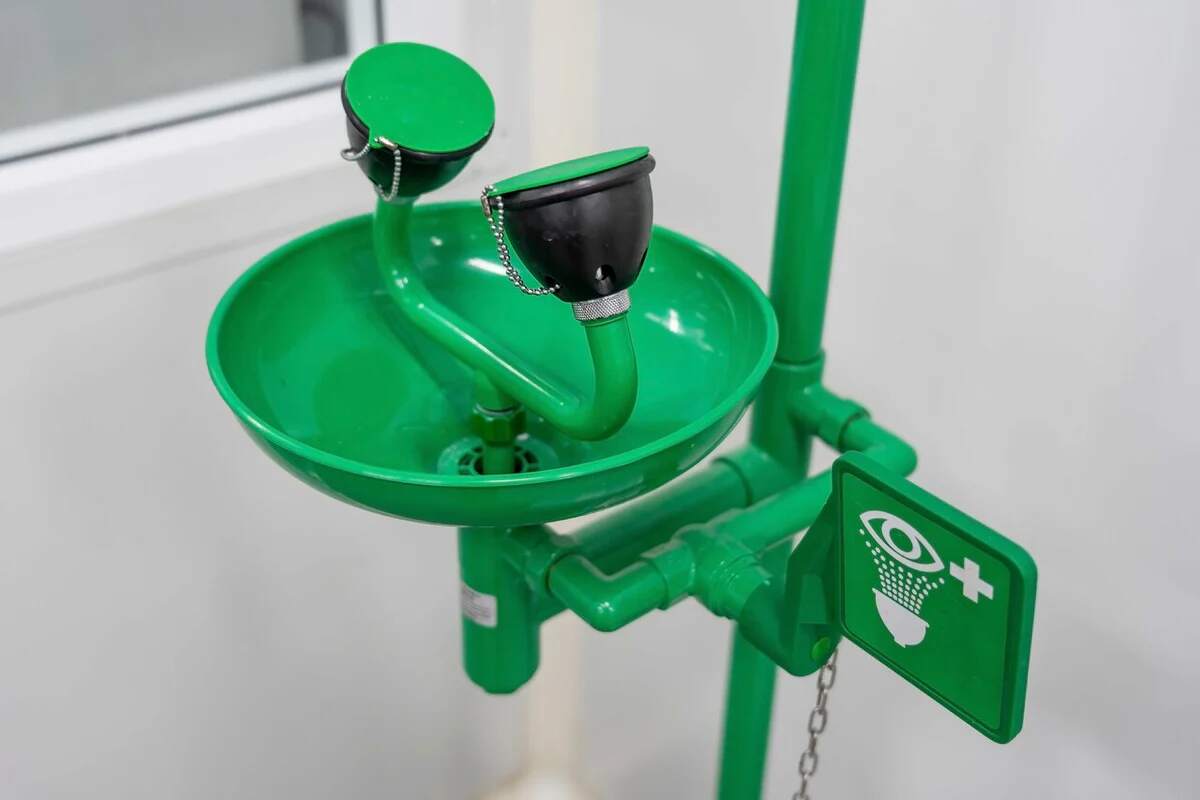Eyewash stations are critical safety features in hospitals and laboratories, providing immediate decontamination for workers who have been exposed to hazardous chemicals or materials. Ensuring that these stations are functional and accessible can prevent serious eye injuries, but like any other safety equipment, they need regular inspection and maintenance. This article will delve into the recommended inspection frequency for eyewash stations, why these checks are essential, and best practices for hospital and laboratory environments – lemari asam.
Why Eyewash Station Inspections Are Essential
In any healthcare or laboratory setting, employees are at risk of exposure to harmful chemicals, infectious agents, and other hazardous substances. Quick access to an operational eyewash station can be crucial, potentially preventing long-term eye damage or even blindness.
Without routine inspections, eyewash stations may become ineffective over time due to factors like:
- Clogging from mineral deposits in the plumbing.
- Contamination of stagnant water, potentially leading to infection.
- Mechanical malfunctions that can inhibit the flow or delivery of water.
In environments where eyewash stations are neglected, they may not function correctly when urgently needed. Regular inspections are a preventive measure, ensuring that the stations are ready to deliver adequate, uncontaminated water within seconds of an emergency.
Recommended Inspection Frequency for Eyewash Stations
Weekly Activation Test
OSHA and ANSI recommend that eyewash stations undergo a weekly activation test. This test involves flushing the system briefly to ensure a continuous, adequate flow of clean water. Weekly activation helps:
- Prevent microbial buildup by eliminating stagnant water.
- Flush out any sediment or foreign particles in the system.
- Ensure operational functionality and identify potential blockages.
Weekly testing is particularly important in hospitals and labs, where the risks of contamination are higher due to the types of chemicals and pathogens present.
Annual Comprehensive Inspection
In addition to weekly tests, OSHA and ANSI also recommend a comprehensive inspection once a year. This more thorough check includes:
Verifying water temperature: For optimal effectiveness, water temperature should be “tepid” (between 60-100°F).
Assessing water pressure and flow rate: Ensure that the station delivers 1.5 liters of water per minute for at least 15 minutes.
Cleaning or replacing any filters or parts as needed.
Inspecting eyewash stations for leaks, broken valves, or any other mechanical issues.
During this annual inspection, it is also recommended to check the accessibility of each eyewash station. Hospital and lab layouts can change, and equipment or storage materials should never obstruct these stations.
Key Best Practices for Eyewash Station Maintenance
Assign a Responsible Team Member
In hospitals and laboratories, designating a staff member or safety officer responsible for regular inspections can streamline the process and ensure accountability. This individual should be trained to follow OSHA and ANSI standards, ensuring inspections are thorough and up to code.
Record Every Inspection
Keeping a detailed log of each inspection is essential, especially for hospitals and laboratories that might face regulatory inspections. The log should include:
- Date of inspection
- Name of inspector
- Results of the test (including any issues or malfunctions)
- Actions taken if repairs or maintenance were necessary
This log will be helpful in case of audits or accidents, providing a history of compliance and safety measures.
Install Safety Signage and Instructions
Clear, easily visible instructions near each eyewash station can save valuable time in emergencies. Employees should also be trained on proper eyewash usage, including how long to flush their eyes and how to activate the station. Signage should remind users to flush their eyes for the full 15 minutes required by safety standards.
Use Pre-Mixed Saline Solution (If Possible)
In situations where water purity is crucial, consider using pre-mixed saline solution in the eyewash station. Pre-mixed solutions can be safer in settings where high water quality is a concern, like hospitals. This approach ensures that employees receive uncontaminated, pH-balanced water for flushing their eyes.
Conclusion: Making Eyewash Station Maintenance a Priority
Routine inspection and maintenance of eyewash stations should be a priority in every hospital and laboratory. By adhering to weekly and annual inspection protocols, healthcare and lab professionals can protect themselves and their colleagues from the potential dangers of chemical and biological exposure.
With the guidance of OSHA and ANSI standards, hospitals and laboratories can ensure their eyewash stations remain reliable and ready to use when needed most. Remember, the time invested in regular inspections is a small price to pay for the safety and well-being of those working with hazardous materials.
Following these steps and integrating these best practices will help your facility meet compliance standards while safeguarding employees’ health.




